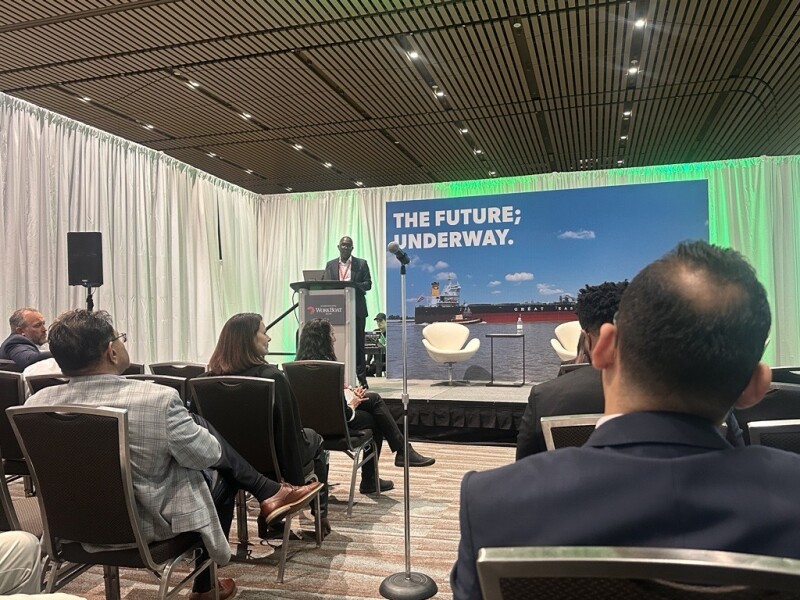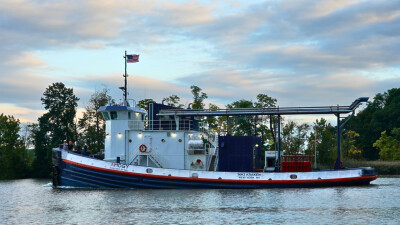At last week's International WorkBoat Show (IWBS), the stage was set for an ambitious and forward-looking conversation about the future of marine power.
Representing Cummins, a century-old giant in the engine manufacturing industry, Gbile Adewunmi, the company's vice president for industrial markets, outlined the company’s “Destination Zero” strategy. The comprehensive plan aims to navigate the challenges and opportunities of achieving net-zero emissions across marine and other industrial markets.
“We believe there isn’t a way to get to zero today,” Adewunmi said. “However, we need to start right now. We owe it to all our stakeholders — employees, suppliers, and customers to invest in and work on a plan.”
Cummins is leveraging its vast experience, gleaned from decades of innovation and partnerships across industries, to meet the evolving demands of the marine sector. The company's approach hinges on four pillars: lowering emissions today, reducing the environmental impact across the entire value chain, driving widespread adoption through scalability, and targeting net-zero emissions by 2050.
Central to Cummins’ strategy is the concept of bridge solutions. Technologies and fuels enable the transition from diesel engines to alternative and zero-carbon systems. These include advancements in low-carbon fuels like methanol, biodiesel, and hydrogen and innovative platforms such as hybrid-electric systems.
One promising development is the company’s HELM (high efficiency, low emissions, multiple fuels) platform, which allows for flexible use of various fuel types, from diesel to hydrogen, all within the same engine footprint.
“Our goal is to make it easier for our customers to begin their transition to low-carbon solutions,” Adewunmi explained.
Cummins envisions the journey to net zero in three stages:
• Exploration and Testing (2020-2030): A period of scientific exploration, pilot projects, and small-scale production.
• Acceleration (2030-2040): As renewable energy infrastructure grows, hybrid and alternative fuel systems gain traction.
• Full Deployment (2040-2050): Widely available zero-carbon solutions with established infrastructure and technologies.
Adewunmi explained that the timeline acknowledges the complexity of aligning technological advancements, economic feasibility, and global infrastructure development.
Regulation and infrastructure remain significant challenges as well. Adewunmi noted that regional disparities in environmental regulations complicate the path forward, while the lack of alternative fuel infrastructure, particularly for options like hydrogen, hampers adoption. Public-private partnerships and clear, aligned policies are crucial to accelerating progress.
Cummins remains optimistic despite these challenges. With over $1 billion invested annually in research and development, the company is determined to stay ahead in delivering scalable, practical solutions for its customers.
The marine industry’s transition to zero emissions will not happen overnight. However, Cummins’ broad portfolio of engines, hybrid systems, and zero-carbon technologies positions the company as a key player in this evolution.
“We embrace the opportunity to solve hard problems,” Adewunmi said. “That’s what we want to do.”





